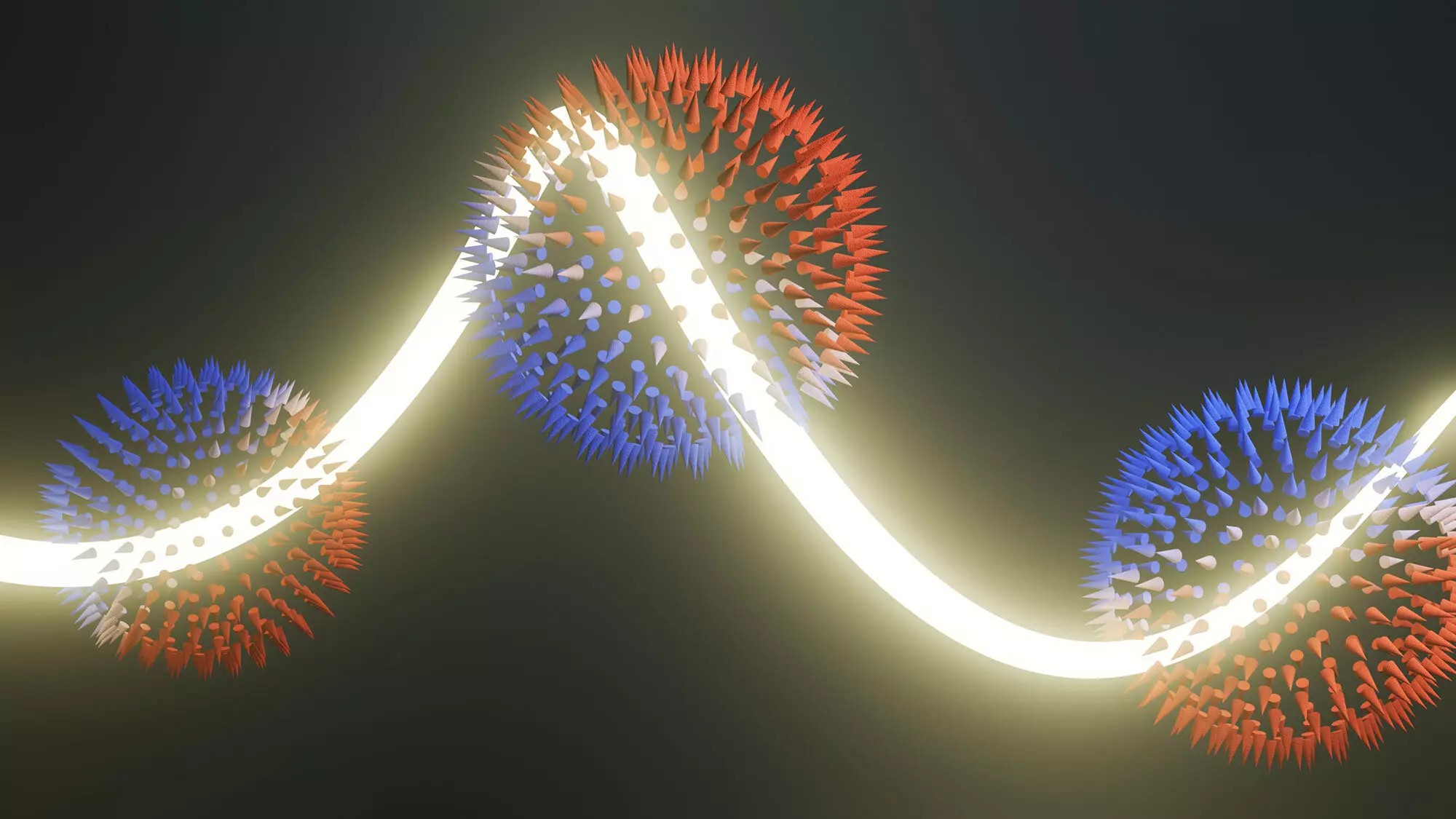The exploration of orbital angular momentum (OAM) monopoles has emerged as a riveting frontier within the evolving discipline of orbitronics, which seeks to harness the properties of electrons for enhanced information processing. As concerns about the environmental impacts of traditional electronics grow, the spotlight is increasingly falling on alternatives like orbitronics that promise energy efficiency and sustainability. Recent findings, stemming from collaborative research conducted at the Paul Scherrer Institute (PSI) and the Max Planck Institutes, signify a breakthrough in this area, offering a profound theoretical and experimental basis for the existence of OAM monopoles. Published in *Nature Physics*, this pivotal discovery marks a significant stride toward realizing the full potential of orbitronic technology.
Conventional electronics primarily operate on the transfer of electrical charge, typically relying on electron flow. In contrast, spintronics emerged as a promising alternative that leverages the intrinsic spin of electrons. However, the exploration of OAM provides a novel approach by exploiting the orbital characteristics of electrons revolving around atomic nuclei. This method opens up new avenues for developing innovative communication and memory storage devices that could drastically reduce energy consumption, primarily by enabling high-density data storage with low current inputs.
The search for materials capable of effectively generating OAM flows has been an obstacle; yet, the recent identification of chiral topological semimetals presents a fascinating advancement in this endeavor. These materials, discovered in 2019, exhibit a unique helical atomic structure that imparts an innate “handedness”, akin to that found in DNA. Such properties not only facilitate the generation of OAM currents but also imply that these textures can emerge spontaneously without the necessity of external stimuli.
Chiral topological semimetals stand out as preferred candidates for orbitronic applications. The intrinsic characteristics of these materials herald a revolutionary shift in how we conceptualize and utilize OAM. The research led by Michael Schüler and his international team underscores that such semimetals possess built-in OAM textures, alleviating concerns usually associated with external energy inputs, which often complicate device design and functionality. The realization that OAM could be generated intrinsically paves the way for the creation of more stable and efficient orbitronic devices.
The intriguing phenomenon of OAM monopoles specifically gains attention due to their isotropic nature. This means that OAM flows can emanate uniformly in all directions, opening up diverse possibilities for data transmission and storage. The unique topology of these monopoles resembles that of a hedgehog’s quills radiating from a center point, enhancing their attractiveness for potential applications in advanced technology solutions.
Despite the theoretical allure of OAM monopoles, many questions remained unanswered until the recent collaborative study provided vital insights. The researchers employed Circular Dichroism in Angle-Resolved Photoemission Spectroscopy (CD-ARPES), employing circularly polarized X-rays, to probe the elusive OAM phenomena. This experimental technique had previously experienced difficulties due to interpretational complexities, often resulting in potential evidence for OAM monopoles being obfuscated within data.
Schüler and his team meticulously dissected the data, challenging preconceived notions and exploring various photon energies to determine how signals related to OAM were affected. This rigorous approach unveiled the establishing relationship between energy variations and the behavior of OAM signals, significantly advancing the understanding of monopoles and resolving the long-standing theory-experiment disconnect.
The successful detection of OAM monopoles not only validates theoretical models but establishes a framework for future research in orbitronics. Discovering that the monopole polarity can be manipulated within different crystal environments showcases the adaptability of OAM configurations and hints at creating versatile orbitronic devices with tailored functionalities.
Researchers are now empowered to explore OAM textures in various materials, fostering ambitions for pioneering applications ranging from high-performance memory storage to advanced quantum computing endeavors. As exploration continues, the potential convergence of orbitronics with other technologies may yield unforeseen innovations, reinforcing the urgency for continued investment and study in sustainable electronic solutions.
The recent achievements in understanding and characterizing OAM monopoles signify a crucial step forward in the quest for more efficient and environmentally friendly electronic systems. With the marriage of theory and experiment finally realized, the stage is set for a deeper inquiry into the inherent qualities of chiral topological semimetals and their applications in orbitronics. As this field evolves, it promises to redefine our understanding of information technology and its impact on the planet, paving the way for a sustainable technological future.


Leave a Reply